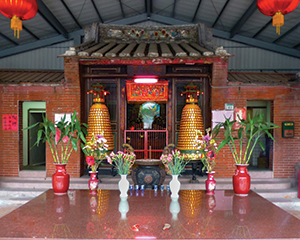Archeologists rely on shards and pots to piece together the stories and histories of lost civilizations, but what about the hopes, dreams and beliefs of the people who actually fashioned and fired the ceramics that filled the palaces, towns, and even trade ships of those that they served? The potter's and their place in history should not be a forgotten when a quest to understand and appreciate an artifact's purpose and artistic qualities is undertaken. No matter how removed a Chinese porcelain vessel might seem in a refined collection or museum, from the place where it was fashioned, its provenance will always start at the kiln site where it was created, decorated and fired under the watchful guard of a revered pottery god. The story of how Lo Ming became the trade deity of the Yingge ceramics industry is a legend that evolved out of the ritual practices and oral storytelling traditions conducted within the Yingge pottery community. Fading fast into the twilight of history, these stories are still barely kept alive by a small following of believers who honor them as part of a common Chinese worship system, which even in Mandarin translates as “folk religion”. This paper presents several first-hand accounts of how Lo Ming and other Chinese deities have been worshipped during the past century in Yingge, Taiwan.



